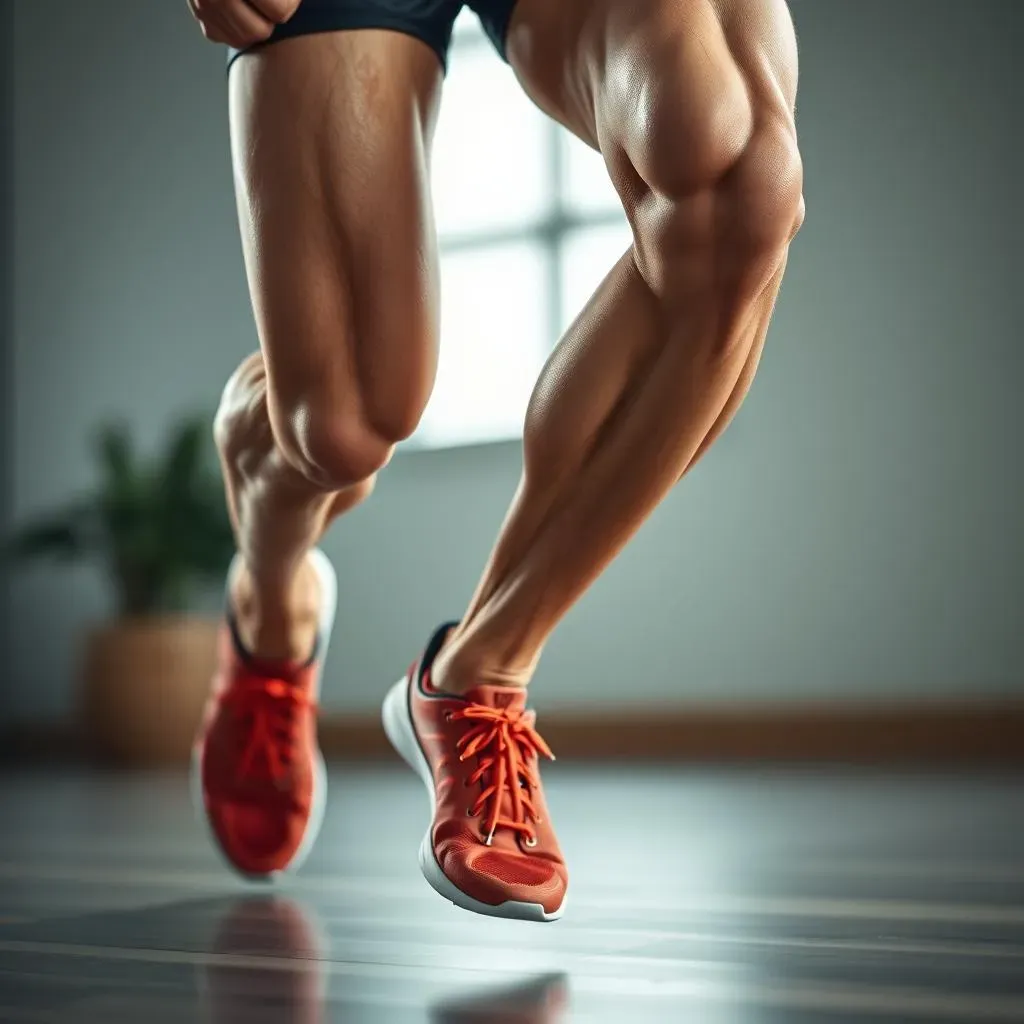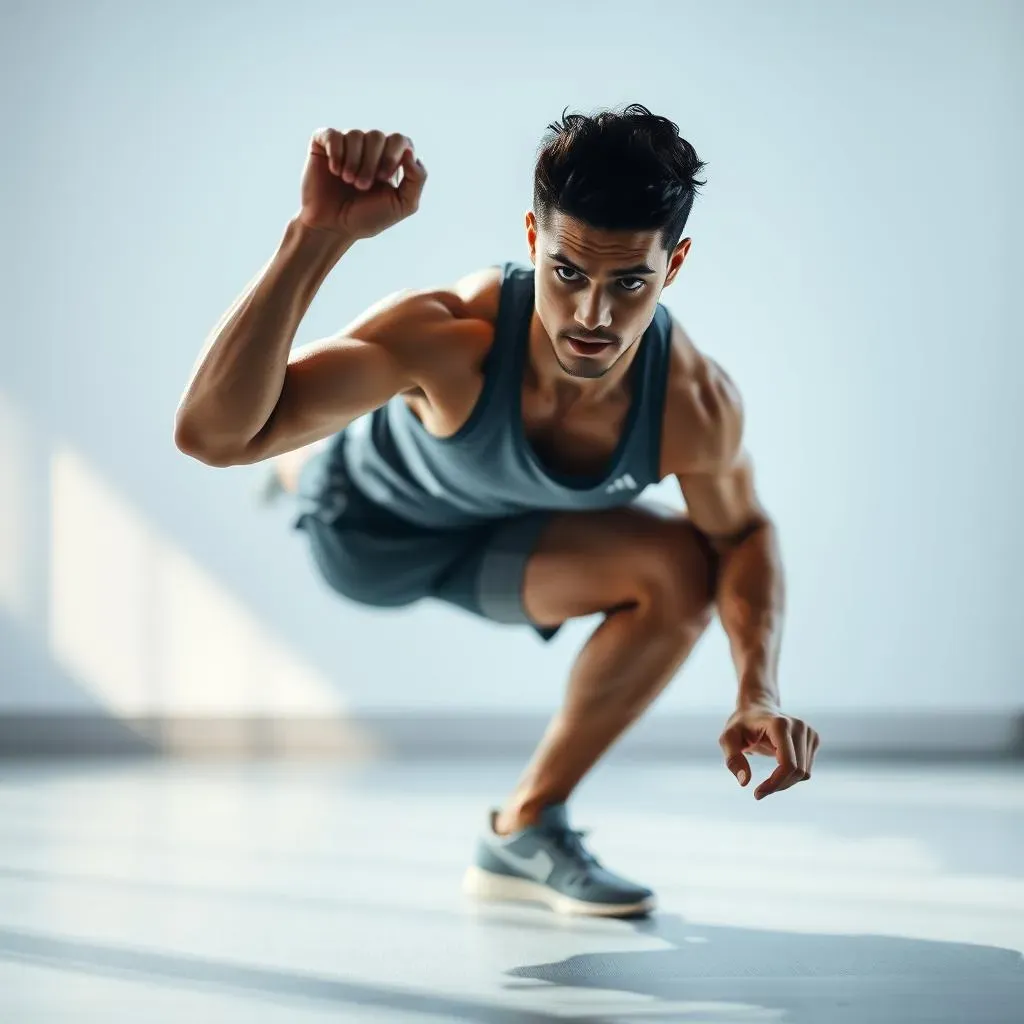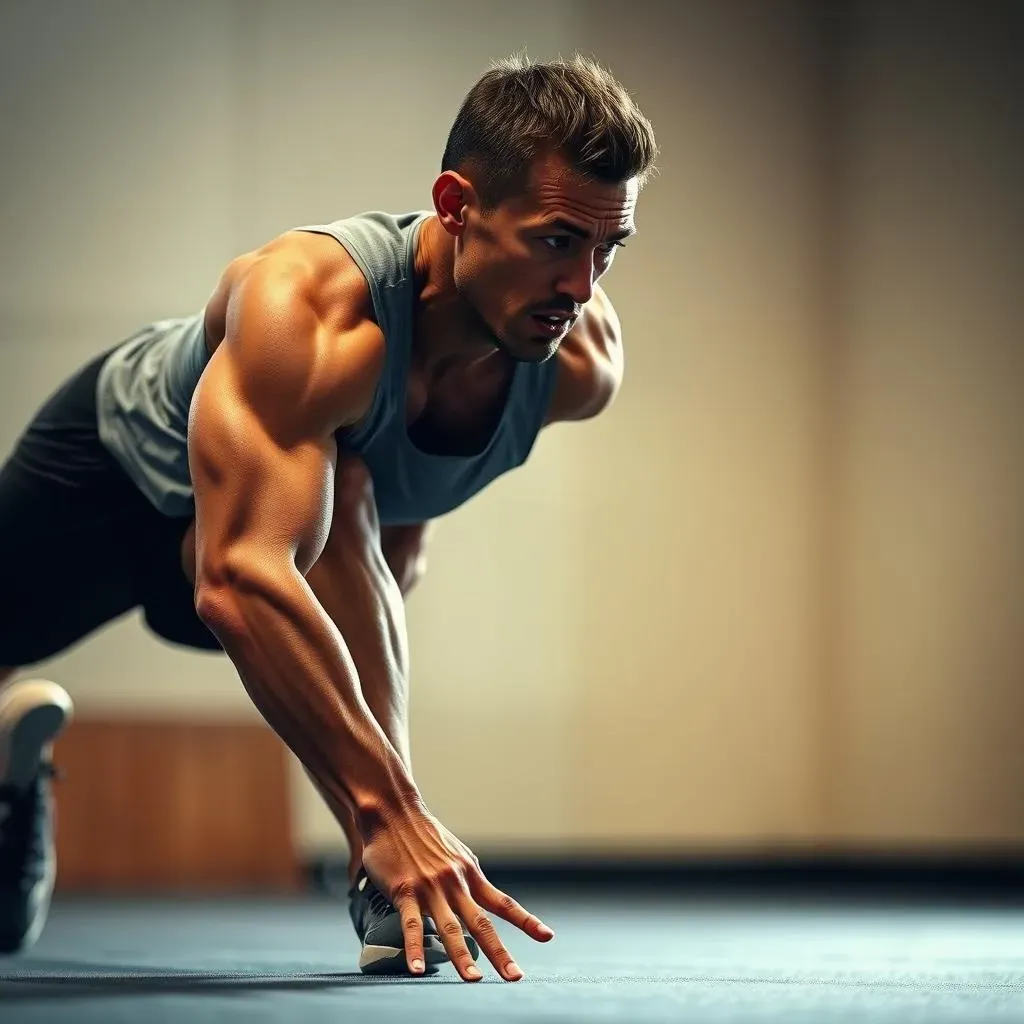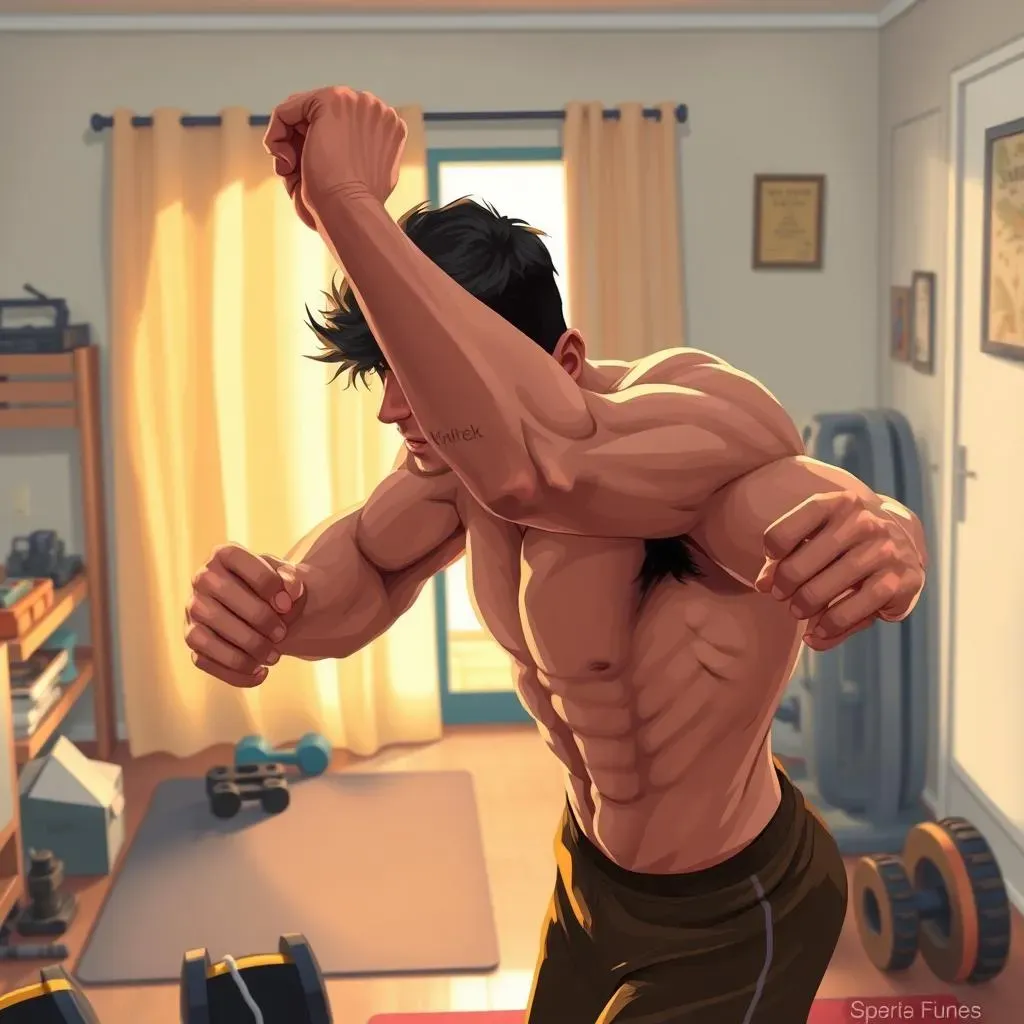Table of Contents
Hey runners! Ever feel like your legs are giving out before your lungs do? You’re not alone. Strong legs are the secret weapon for any runner, whether you're aiming for a new personal best or just trying to make it through your neighborhood loop without feeling like a wobbly jelly. That’s where leg workouts at home for runners come in. Forget the fancy gym equipment; we’re going to use your body to build serious running power. This isn't about bulking up; it's about creating the kind of strength that translates directly into faster times, longer distances, and fewer injuries. We'll walk through a killer circuit that hits all the key areas: stability, mobility, and power. Think of it as your personal running upgrade, all from the comfort of your living room. Get ready to transform your runs with these effective leg workouts at home for runners. Let's get started!
Why Runners Need Strong Legs: The Power of Leg Workouts at Home

Why Runners Need Strong Legs: The Power of Leg Workouts at Home
The Foundation of a Great Run
Think of your legs as the engine of your running machine. They're not just for show; they're the powerhouse that propels you forward, absorbs impact, and keeps you stable. When your leg muscles are weak, it's like trying to drive a race car with a tiny engine. You might get a little ways, but you'll be slow and struggle a lot. That's why focusing on leg strength isn't just a "nice to have" for runners, it's absolutely essential. It's about building a solid base so you can run faster, longer, and with less risk of getting hurt.
It's not just about those big muscles you see in bodybuilders either. We're talking about the entire chain, from your glutes and hamstrings all the way down to your calves and ankles. These muscles work together to keep you balanced, powerful, and efficient. Neglecting any part of this chain is like ignoring a crucial piece of your car's engine—eventually, something's going to break down, and in this case, that could be an injury or a plateau in your performance.
Benefit | Why It Matters |
|---|---|
Increased Speed | Stronger leg muscles generate more force, leading to faster paces. |
Improved Endurance | Muscles that can handle more work before tiring mean you can run longer. |
Reduced Risk of Injury | Strong legs provide better support and stability, decreasing the chance of strains or sprains. |
More Than Just Speed
It’s not only about going faster though, strong legs are your best defense against those nagging running injuries. Think about it, each time your foot hits the ground, your leg muscles are working hard to absorb the impact and keep your joints stable. If those muscles are weak, the force is transferred to your joints, increasing the risk of strains, sprains, and all sorts of frustrating setbacks. By strengthening your legs, you're essentially building a protective shield around your body, allowing you to run longer and more safely.
And let's not forget about efficiency. When your leg muscles are strong, they work together more smoothly, using less energy to propel you forward. This means you can run further and faster without feeling completely drained. It’s like having a well-oiled machine that's firing on all cylinders. So, if you want to be a more resilient, efficient, and powerful runner, those leg workouts at home are going to be your new best friend.
"The strength of your legs directly impacts your running performance and injury prevention. Don't skip leg day!" - Some Smart Runner
The Ultimate AtHome Leg Workout Circuit for Runners

The Ultimate AtHome Leg Workout Circuit for Runners
Your Running Game Changer
Alright, so you know why strong legs are key, but what does a killer leg workout actually look like? It’s not about spending hours in the gym lifting heavy weights. We're focusing on a circuit designed to be done at home, using nothing more than your body and maybe a towel or mat for comfort. This circuit is all about hitting those crucial running muscles—think glutes, hamstrings, quads, and calves—with exercises that boost stability, mobility, and power. We’re going to move through each exercise with purpose, making sure you're getting the most out of every rep. No fluff, just focused work.
This isn't some random collection of moves; it's a carefully designed sequence that builds upon itself. We'll start with exercises that challenge your balance and coordination, then move into strength-building movements, and finish with some dynamic moves to get your heart pumping. This circuit is meant to be challenging but also adaptable. If something feels too hard, you can modify it, and if it feels too easy, you can always increase the reps or rounds. The goal is to push yourself but also listen to your body.
Exercise | Focus | Time |
|---|---|---|
Bent-Knee Single-Leg Toe Touch | Stability, Balance | 30-60 seconds per leg |
One-and-a-Half Tempo Squat | Strength, Power | 30-60 seconds |
Curtsy Lunge to Lateral Lunge | Mobility, Strength | 30-60 seconds per leg |
Hamstring Curl | Hamstring Strength | 30-60 seconds per leg |
Jump Lunge to Skater Hop | Power, Agility | 30-60 seconds |
Wall Sit | Endurance, Strength | 30-60 seconds |
The Circuit Breakdown
The circuit includes six key exercises that are going to work your legs from every angle. First, we're kicking things off with the Bent-Knee Single-Leg Toe Touch. This one is all about balance and engaging those stabilizing muscles around your ankles and hips. Next, we’re diving into One-and-a-Half Tempo Squats. This variation of the classic squat will help you build serious strength in your quads and glutes. Then, we’re moving into the Curtsy Lunge to Lateral Lunge, a killer combo for hip mobility and overall leg strength. After that, we have Hamstring Curls, which can be done with a towel or without. This exercise focuses on the back of your legs, often neglected by runners. Finally, we’re going to finish with Jump Lunge to Skater Hop and Wall Sit, these are going to challenge your power and endurance.
Remember, it's all about quality over quantity. Focus on maintaining proper form throughout each exercise. That means engaging your core, keeping your back straight, and controlling your movements. You should be feeling the burn but not any sharp pain. If you’re unsure about your form, take a look at some videos online or ask a friend to watch you. This circuit is designed to be repeated 2-4 times, with a 2-3 minute rest in between rounds. So, get ready to feel the power in your legs, and the difference in your runs. These exercises are your ticket to becoming a stronger, faster, and more resilient runner.
"Consistency is key! Stick with these workouts, and you'll see a real difference in your running." - Some Wise Runner
How to Do Each Exercise: StepbyStep Guide for Runners

How to Do Each Exercise: StepbyStep Guide for Runners
Bent-Knee Single-Leg Toe Touch: Balance is Key
Alright, let's break down this tricky move. Stand tall, then lift one leg slightly off the ground, bending it at the knee. Now, imagine you're trying to tap your toes with the opposite hand. As you reach down, hinge at your hips, keeping your back straight and your core engaged. You might feel a slight wobble, that's totally normal. It means your stabilizing muscles are working. The key is to control the movement, not to rush through it. If you can't quite reach your toes, that's okay, just go as far as you comfortably can while maintaining good form. Remember to keep your standing leg slightly bent to avoid locking your knee. This exercise is like a mini-workout for all those little muscles that keep you balanced on the run.
Don't worry if you feel a little clumsy at first; it's a challenging move, even for experienced runners. Start slowly and focus on the feeling of balance. It's not about how low you go; it's about maintaining control. If you find it's too hard, try doing it next to a wall for support. Just lightly touch the wall for balance, but try not to rely on it too much. Over time, you'll see your balance improve, and you'll find it easier to reach further. Remember to do both legs, and try to keep the reps even. This exercise will not only improve your balance, but also strengthen your core, which is essential for running.
Step | Action |
|---|---|
1 | Stand tall, lift one leg slightly, bending at the knee. |
2 | Hinge at hips, reach for toes with opposite hand. |
3 | Keep back straight, core engaged, control movement. |
4 | Return to starting position. Repeat on other side. |
One-and-a-Half Tempo Squat: Strength Builder
Now, let's get into the squat, but with a twist. Start with your feet shoulder-width apart, and push your hips back like you're about to sit in a chair. Lower down into a full squat, but not too fast, keep it controlled. Now, here's the "one-and-a-half" part: rise halfway up, then go back down into the full squat, and finally come all the way up. It’s like doing a squat and a half, and it's designed to work your muscles a little bit harder. Keep your core engaged throughout the movement, and make sure your knees track over your toes. This isn't about speed; it’s about feeling the burn and building strength in those quads and glutes.
The tempo part is key to this exercise, so don’t rush it. Focus on a slow, controlled descent, a half-rep, and then a full ascent. This controlled movement will engage your muscles for a longer period, which helps with building strength and endurance. If you find it hard to maintain good form, try doing it in front of a mirror. This way, you can check that you're keeping your back straight and your core engaged. If you feel any pain in your knees, stop and adjust your form. It’s also a good idea to start with a smaller range of motion and then increase it gradually, as you get stronger. This one-and-a-half squat is a real powerhouse for runners, and when done correctly, it will make a difference in your speed and power.
"Good form is more important than how many reps you do. Quality over quantity is the key." - Some Smart Trainer
Making the Most of Your Leg Workouts at Home: Tips and Tricks

Making the Most of Your Leg Workouts at Home: Tips and Tricks
Maximize Your Efforts
Okay, so you've got the exercises down, but how do you make sure you're really getting the most out of your leg workouts at home? It's not just about going through the motions, it's about being smart with your training. First off, consistency is crucial. Try to stick to a regular schedule, whether it's two, three, or even four times a week. Even short, consistent workouts are better than the occasional marathon session. It's like brushing your teeth; you wouldn't do it once a month and expect great results, would you? Also, don't be afraid to mix it up. Your muscles adapt quickly, so if you're doing the same routine every time, they'll stop getting challenged. Try adding some variations to the exercises or increasing the reps or rounds. And remember, listening to your body is key. If you're feeling pain, don't push through it. Rest and recovery are just as important as the workout itself. Lastly, don’t forget to warm up before and cool down after each session.
Another thing to consider is your environment. Make sure you have enough space to move around without bumping into things. A good workout space helps you focus and perform better. Also, a mat can make a big difference, especially when you're doing exercises on the floor. It's all about creating the right environment for you to succeed. Don't forget about proper nutrition and hydration. Fuel your body with good food and plenty of water. This will help you perform better and recover faster. And hey, if you’re feeling a bit bored, put on some music or find a workout buddy. This can make it more fun and keep you motivated. Remember, it’s not about perfection; it’s about progress. So, keep at it, be patient, and you’ll see those results. Remember, this is a journey, not a race.
Tip | Why It Matters |
|---|---|
Consistency | Regular workouts lead to better results. |
Variety | Prevents plateaus and keeps muscles challenged. |
Listen to Your Body | Avoids injuries and burnout. |
Proper Nutrition | Fuels performance and recovery. |
Level Up Your Workout
Want to take your leg workouts up a notch? Let's talk about some ways to make things more challenging. First, think about adding some resistance. If you don't have weights at home, that's not a problem. You can use things like a backpack filled with books or water bottles. You can also use resistance bands to add some extra challenge to your squats or lunges. These bands are super versatile and easy to store. Another great way to increase the intensity is to slow down your movements. Going slow will force your muscles to work harder and for longer. Also, try adding some plyometric moves, like jump squats or box jumps. These exercises are great for building power and explosiveness. But, make sure you’re ready for these before you start. It's all about finding ways to push yourself out of your comfort zone and make the workout more effective. But, always make sure you're maintaining proper form, even when you’re increasing intensity, so you avoid injury.
Finally, don’t underestimate the power of rest and recovery. Your muscles need time to repair and rebuild, so make sure you’re getting enough sleep. It’s also a good idea to incorporate some active recovery, like light walking or stretching, on your rest days. This will help reduce soreness and speed up recovery. And remember, the best workout is the one you enjoy and can stick to. So, find what works for you, be consistent, and be patient. You’ll be surprised at how strong and resilient your legs can become. This is your journey, so make it a fun and rewarding experience. Don't be afraid to experiment and try new things, but always listen to your body.
"The best workout is the one you actually do consistently." - Some Motivated Runner
